
The black-winged little yellow bat is a species of vesper bat native to Central America.
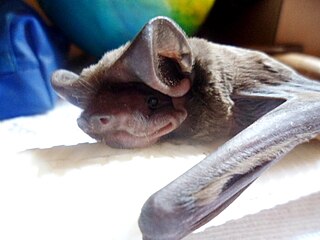
Wagner's bonneted bat or Wagner's mastiff bat, is a species of bat in the family Molossidae. It is found in the Americas from Argentina and Peru north to Mexico, and Cuba. Populations in Florida in the United States are now recognized as the Florida bonneted bat

Murina is a genus of vesper bats.

Allen's yellow bat is a species of vesper bat. There is some taxonomic debate surrounding this species, with some authors considering Baeodon a genus rather than a subgenus. It is endemic to Mexico.

Genoways's yellow bat is a species of vesper bat. It is found only in Mexico. It is threatened by habitat loss. Due to its imperiled status, it is identified by the Alliance for Zero Extinction as a species in danger of imminent extinction.

The slender yellow bat is a species of vesper bat. It is found only in Mexico.

The little yellow bat is a species of vesper bat found only in Mexico.
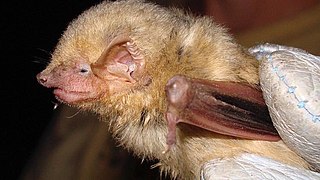
The western yellow bat is a species of vesper bat. It is found in Mexico and the southwestern United States. This species roosts in trees such as Populus fremontii, Platanus wrightii, and Quercus arizonica. If available, the western yellow bat will use the dead fronds that encircle palm trees as a roosting site.

Van Gelder's bat or Van Gelder's big-eared bat is a species of vesper bat in the family Vespertilionidae. It is found in Belize, Costa Rica, Honduras, and Mexico. The species is monotypic within its genus. It is part of the tribe Antrozoini within the subfamily Vespertilioninae and is related to the pallid bat. The bat is found in forest habitat from sea level to elevations as high as 2300 m, although not usually above 1300 m, and is insectivorous and crepuscular. It apparently has a fragmented distribution, and is threatened by deforestation.
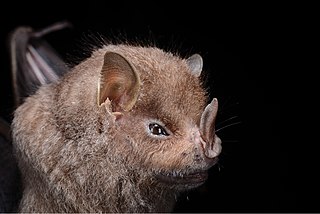
The Guadeloupe big-eyed bat is a species of bat in the family Phyllostomidae. It is found in Guadeloupe and Montserrat. It is threatened by habitat loss mostly because of Hurricane Hugo, which destroyed 90% of the population of this bat in 1989. The species may be locally extinct in some areas of Guadeloupe.
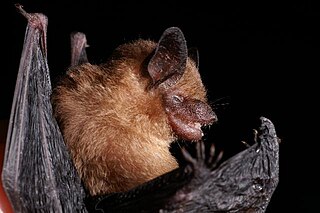
The Yucatan yellow bat is a species of bat found in the Yucatán Peninsula in Mexico, and possibly also in Belize and Guatemala. These small insectivorous bats forage on flying insects at dawn and dusk.

Antrozoini is a tribe of bats in the subfamily Vespertilioninae of the family Vespertilionidae. It contains the pallid bat, Van Gelder's bat, the genus Rhogeessa, and the fossil Anzanycteris.

Husson's yellow bat is a species of vesper bat found in Suriname and southern Brazil.
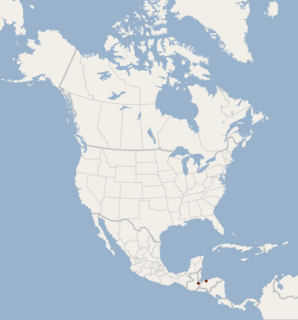
Menchu's little yellow bat is a species of vesper bat found in Central America. It was described as a new species in 2012.

Bickham's little yellow bat is a species of vesper bat found in Central America.

Aeorestes is a genus or subgenus of vesper bat commonly known as the hoary bats. As a genus, it includes species that were formerly included in the genus Lasiurus.
Rhogeessa velilla, also called the Ecuadorian little yellow bat, is a species of vesper bat in the genus Rhogeessa. It is found in Northwestern Peru and parts of Ecuador. The species was previously included in R. io, but is now recognized as a separate species. Very little is known about this species, though it is generally considered to be insectivorous.
Dasypterus is a genus of or subgenus of vesper bat. As a genus, it includes species that were formerly in the genus Lasiurus. Collectively, members of Dasypterus are referred to as the yellow bats.
















